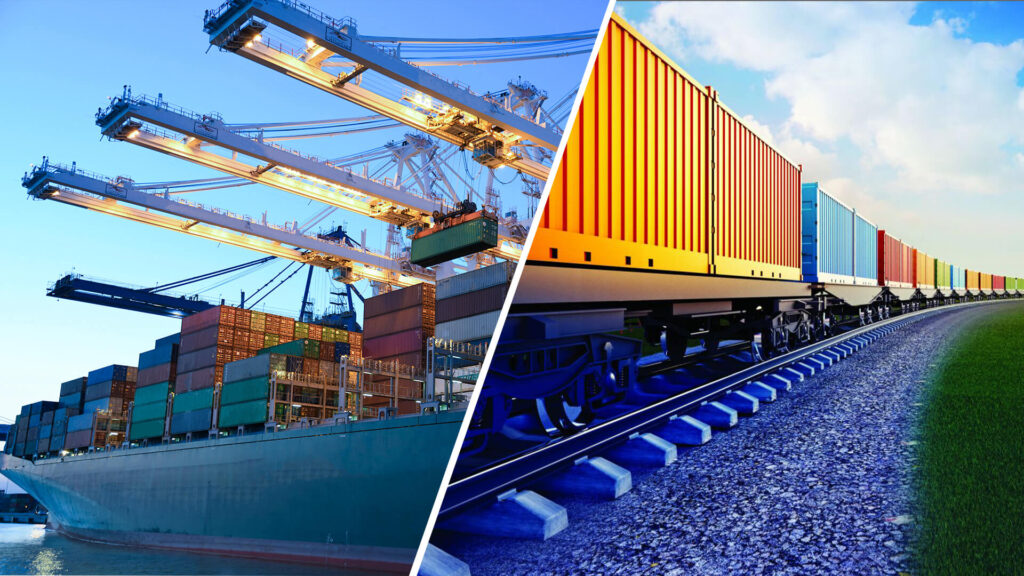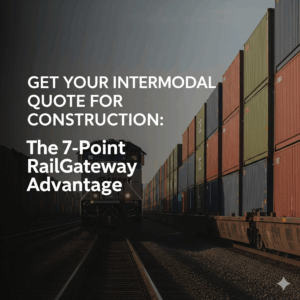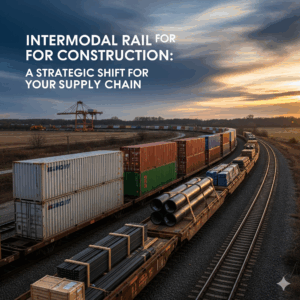Learn About Transloading vs Intermodal Shipping
In today’s fast-paced and globalized economy, moving goods efficiently is essential for any business looking to remain competitive. As supply chains evolve to meet rising customer expectations and cross-border demands, logistics strategies like Transloading vs Intermodal Shipping are gaining attention from Canadian shippers. Both methods offer distinct advantages and can play a critical role in reducing costs, increasing speed, and optimizing transportation networks. But understanding the differences – and knowing when to choose one over the other – is key to driving efficiency and profitability in 2025.
Canadian businesses, especially those moving goods across provinces or international borders, often face unique logistical challenges. Vast distances, multiple transportation modes, and ever-changing regulations require adaptable solutions. That’s where the debate of Transloading vs Intermodal Shipping becomes important. Whether you’re shipping to the U.S., managing cross-country freight, or juggling imports and exports, these two methods can drastically impact your bottom line.
So what is transloading? In essence, transloading involves the transfer of goods from one mode of transport to another – typically from ocean containers to trucks or trains. It’s ideal when flexibility is needed to switch carriers, consolidate shipments, or move goods from port to final destination. Intermodal shipping, on the other hand, keeps goods in a single container throughout the journey. That container is then moved via different transport modes – such as rail and truck – without handling the cargo itself.
Both methods have gained popularity in the wake of recent global supply chain disruptions. Fuel costs, driver shortages, and port delays have forced logistics managers to reassess their strategies. In this landscape, Transloading vs Intermodal Shipping is not just a logistical choice, but a strategic one. Canadian companies that understand these approaches – and apply them based on cargo type, destination, timing, and costs – can better position themselves for long-term success.
For instance, businesses dealing with fragile, temperature-sensitive, or time-critical goods may prefer intermodal solutions that reduce handling. Meanwhile, companies managing multiple suppliers or variable volumes may benefit from the flexibility of transloading. Each option has operational, financial, and regulatory implications. Making the right choice can lead to faster delivery times, improved customer satisfaction, and stronger supply chain resilience.
Additionally, new technologies are reshaping both strategies. From real-time cargo tracking to AI-driven load optimization and customs automation, modern supply chains are far more intelligent than they were even a few years ago. These advances are further narrowing the gap between Transloading vs Intermodal Shipping, offering enhanced visibility, automation, and control across the entire freight journey.
Ultimately, this blog will break down both options with clear comparisons, real-world use cases, and expert insights tailored to the Canadian market. We’ll cover the benefits and challenges of each method, explore cost structures and environmental considerations, and help you determine which model is best aligned with your business needs.
Whether you’re a seasoned logistics manager or a small business exploring growth through e-commerce or cross-border trade, understanding Transloading vs Intermodal Shipping is essential. Let’s dive into the details and uncover which method is the smarter fit for your operations in 2025 and beyond.
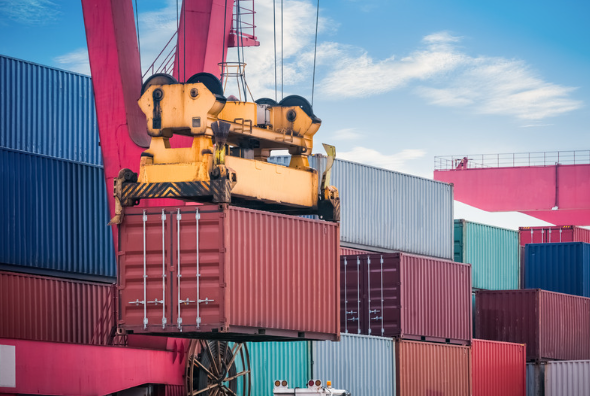
What Is Transloading Shipping?
Transloading is the act of unloading goods from trucks and loading them onto trains, or vice versa. This approach allows shippers to leverage the economic advantages of rail transportation for long-distance hauls while maintaining the flexibility and last-mile delivery capabilities of trucks.
This process is quite common because trucks are usually the only way to deliver goods directly to their final stop. Warehouses often refer to transloading as “cross-docking.”
Freight brokers, who typically don’t own their own trucks or equipment, rely on transloading to find the most suitable transportation option for each shipment. While this flexibility is beneficial, it can be limiting in certain industries, like chemicals, that require specialized equipment.
Transloading can occur between any combination of transportation methods, such as truck to truck, train to train, or even truck to train and vice versa. The ultimate goal is always to find the most cost-effective and timely way to get your products where they need to go.
What Is An Example Of Transloading?
Transloading bridges the gap between transport modes, optimizing long-distance shipments. A transloading example would be – Imagine a forklift transferring pallets from truck to train, or a crane lifting steel beams for flatbed trucks. This strategic cargo movement keeps your supply chain flowing smoothly.
What Type Of Cargo Can Be Transloaded?
You can use transloading to ship many different things, not just regular boxes. It works for big piles of stuff, dry food that won’t spoil, building supplies, raw materials, and even oddly shaped things.
No matter what kind of business you have, the best way to find out if transloading works for what you need to ship is to ask a freight forwarder. They’re the experts and can tell you for sure.
Process Of Transloading Shipments
A common transloading services procedure involves –
- Step 1: The Beginning Of The Journey
The primary stage involves the arrival of a loaded container transported by ship, truck, or train, at a dedicated transloading facility. This container holds the merchandise destined for its final location.
- Step 2: Transloading the Goods
With the help of specialized equipment and skilled personnels, the cargo within the container is carefully unloaded. It will then be deposited in a secure transloading warehouse before being reloaded onto a different mode of transportation. This new mode could be another container placed on a rail car, ship, or truck, or it could be loaded directly onto a final delivery vehicle. This step typically represents the long-distance portion of the entire shipment journey.
- Domestic Considerations:
For domestic shipments within a country, rail transportation often emerges as the most cost-effective, reliable, and environmentally friendly option.
- Direct Delivery Optimization:
Whenever possible direct transfer of the cargo onto the final destination truck or container is preferred. This approach streamlines the process, minimizing delivery times and potential delays within the supply chain. Efficient supply chain movement ultimately translates to a better, more affordable, and safer experience for the customer.
Step 3: Reaching the Final Destination
In some instances, your goods might require further transloading at another dedicated facility before reaching their final destination.
- The Final Leg: Truck Delivery
The most common scenario involves transferring the goods onto smaller trucks for final delivery, particularly when reaching specific or remote locations.
Step 4: Final Delivery Completed
And finally, the transloading process reaches its successful conclusion when the goods arrive at their designated receiver, whether it be a customer location, a distribution center, or a market-ready destination.
The Advantages And Disadvantage Of Transloading
Considering transloading for your logistics network? Here’s a breakdown of its key advantages and potential disadvantages –
Advantages
- Cost Savings
Transloading offers the opportunity to reduce transportation expenses by strategically shifting freight to more efficient modes of transport. This can be particularly beneficial for long-distance shipments.
- Time Efficiency
Transloading can be a valuable tool in expediting deliveries by bypassing common supply chain bottlenecks. By optimizing transportation segments, transloading helps goods reach their destinations faster.
- Increased Flexibility
Transloading empowers shippers to distribute freight to multiple destinations from a single initial shipment. This flexibility can be crucial for businesses managing complex logistics networks.
Disadvantages –
- Increased Handling Risks
The additional handling of freight inherent in the transloading process can elevate the potential for damage or loss of goods. Careful selection of a reputable transloading facility with robust safety protocols can mitigate this risk.
- Intermodal Limitations
Transloading opportunities may be somewhat restricted by the availability of compatible modes of transport and shipping containers. Unlike intermodal shipping, where standardized intermodal containers readily transfer between different modes (ship, rail, truck), transloading might require repackaging, transmodal containers or specific equipment depending on the type of freight and the onward journey.
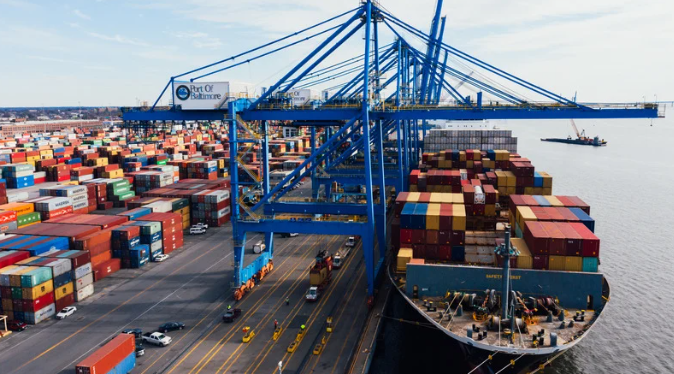
What Is Intermodal Shipping?
Intermodal shipping is a way to move your cargo using different types of transportation together like trucks, trains, and even ships! It all works seamlessly because special containers hold your belongings. Which allows them to be easily switched in-between these various different vehicles throughout their journey.
Process Of Intermodal Shipping
Intermodal Shipping consists of various steps, they are –
- Step 1: Secure Loading
The adventure begins with your products being carefully loaded into a sturdy intermodal container. This specialized container is designed for seamless travel across different modes of transport.
- Step 2: Ready to Roll
Once loaded, the intermodal container is securely placed onto a truck chassis, essentially a platform with wheels that act as the foundation for the container’s journey.
- Step 3: Transitioning to the Intermodal Hub
The truck then transports the container a short distance to a designated intermodal ramp. This is a specialized facility equipped to handle the transfer of containers between trucks and trains.
- Step 4: Train Time
At the intermodal ramp, powerful machinery carefully lifts the container off the truck chassis and precisely positions it onto a flatcar or a well car. These specialized railcars are designed to securely carry intermodal containers during their train journey.
- Step 5: Reaching the Destination
Upon arrival at its destination rail yard, the container is transferred back onto a truck chassis for the final leg of its journey.
- Step 6: Delivery Completed!
Finally, the truck delivers the container directly to its final destination, completing the efficient and secure intermodal shipping process.
The Advantages And Disadvantages Of Intermodal Shipping
Intermodal caught your eye and you are planning to use it? Let’s take a look at the pros and cons
Advantages-
- Saves Money
Combines efficient rail for long hauls with flexible trucks for local delivery, lowering costs.
Note – you can get an idea for a possible cost of your shipments from the official Canada Posts Rate Checker site.
- Faster Service
High capacity and fewer stops keep goods moving.
- Tracks Your Goods
Containers are scanned for constant visibility throughout the journey.
- Safer Transport
Less handling means less damage and enhanced security.
- Eco-Friendly
Rail’s efficiency reduces fuel consumption and emissions.
- Secures Valuables
High liability coverage and fewer stops minimize theft risk.
Disadvantages –
In the debate for transloading Vs intermodal Shipping, intermodal transportation offers undeniable advantages. As it’s crucial to be aware of its limitations. Here are some key disadvantages to consider:
- Slower Delivery Times
Intermodal shipping typically requires more planning due to longer transit times compared to traditional truckload shipping. Expect an additional day for single-rail shipments, potentially extending to two or three days if two railroads are involved.
- Blocking and Bracing Challenges
Securing cargo within intermodal containers can be complex and time-consuming. The blocking and bracing requirements, though essential to prevent damage from vibrations during transit, can add extra cost and complexity to the process.
- Commodity Restrictions
Not all goods are suitable for intermodal shipping. Certain types of cargo may be restricted or even prohibited from traveling by rail. Shipping prohibited items requires special agreements with the railroad, potentially limiting liability coverage for these goods.
- Weight Limitations
Intermodal containers have a maximum weight capacity of 42,500 pounds, which is lower than some traditional truck trailers. This limitation can restrict the amount of cargo a shipper can transport in a single shipment.
- Limited Service Area
Intermodal service isn’t universally available. The finite number of intermodal rail ramps and the limited range of dray services (typically around 100 miles from a ramp) restrict the flexibility of where you can ship to and from.
- Unsuitable for Small Shipments
Smaller shipments may not be cost-effective with intermodal transportation. Contractual pricing, which offers guaranteed rates and capacity, often requires dedicated volumes, such as three loads per week on a specific route..
The Main Difference Transloading Vs Intermodal Shipping
The crucial distinction between intermodal shipping and transloading lies in the handling of the products themselves. In intermodal shipping, the products remain inside the same container throughout the entire journey, regardless of the transportation mode used (truck, train, ship).
On the other hand, transloading involves physically transferring the products themselves between different containers or storage facilities during their travel.
A Summary Of The Topic So Far
Since we have deep dived and touched upon so many points, it can get a bit confusing. So let’s summarize it before we move any further into the debate of Transloading Vs Intermodal Shipping.
| Feature | Transloading | Intermodal Shipping |
| Process | Goods are unloaded from one container and reloaded into another or directly onto a final delivery vehicle. | Goods remain in the same container throughout the journey, transferred between trucks, trains, and ships using specialized equipment. |
| Advantages | Cost-effective for long distances by switching to rail transport. Increased flexibility for multi-destination shipments. Faster deliveries by bypassing bottlenecks. | Cost-effective by combining efficient rail with flexible trucks. Faster service due to fewer stops and high capacity. Improved tracking and visibility throughout the journey. Safer transport with less handling. Environmentally friendly Sustainability due to rail’s fuel efficiency. |
| Disadvantages | Increased risk of damage or loss due to extra handling. Limited by available transport modes (may require repackaging). | Slower transit times compared to truckload shipping. Complex and time- consuming cargo securing (blocking and bracing). Restricted commodities (some may be prohibited by rail). Weight limitations on cargo per shipment Limited service area due to fewer ramps and dray services. Unsuitable for small shipments due to volume requirements for contracts. |
| Ideal for | Breaking down bulk shipments for final delivery. Utilizing rail transport for cost savings on long hauls. Distributing goods to multiple destinations from a single shipment. | Long-distance shipments where cost and efficiency are priorities. High-value cargo due to good tracking and security features. |
Transloading Vs Intermodal Shipping, What to Choose?
Now that you know the difference between transloading and intermodal shipping! And how it all works. Let’s see which one works best for your company:
Many destinations? Choose transloading. It lets you break down your shipment and send parts to different places, making things more flexible. But be careful, extra handling can lead to damage, theft, or delays.
Single container, long distance? Choose intermodal shipping. Your stuff stays safely sealed in the same container the whole way, from truck to train and maybe even a ship! It’s also eco-friendly and easy to track. Plus, it can be fast and affordable if you have a full container.
So, if speed, cost, and ease are important, and your cargo fits in a single container, intermodal shipping might be your best bet!
Conclusion
In the debate for transloading Vs intermodal Shipping, choosing the right shipping method can be tricky! Need to send your goods to multiple locations? Transloading offers flexibility but comes with a risk of delays or damage due to extra handling. On the other hand, intermodal shipping keeps your cargo in the same container throughout its journey, making it faster, cheaper, and eco-friendly.
So depending on your business and requirements select the one that suits all your needs. And pick a side in the transloading Vs intermodal Shipping debate.
The choice is yours!
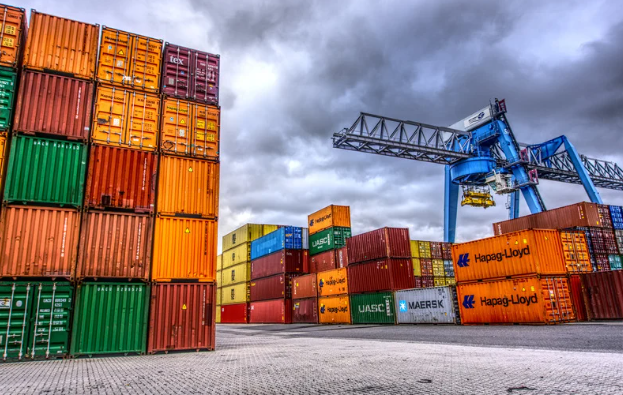
FAQ’s
What Is A Transload Facility?
At a transload facility, goods move between trucks and trains. Equipment like cranes or forklifts unload them based on type, placing them in suitable rail cars. If needed, trucks take them for final delivery.
Transloading Vs Intermodal Shipping, What Is The Difference?
While both intermodal shipping and transloading move goods between trucks and trains, intermodal keeps them in the same container the whole way. Transloading unpacks them and reloads them into a new container for each leg.
What Is Transloading Vs Cross Docking?
Warehouses use two tricks to speed up deliveries: cross-docking and transloading. Cross-docking is like a quick handoff – unload from one truck, reload onto another, barely any storage time. Transloading is more involved, like repacking a suitcase. They unload, sort, and repackage goods for different deliveries.
How We Can Help
For businesses looking to optimize their freight shipping with reliable, efficient, and cost-effective solutions, RailGateway.ca is your trusted partner in intermodal logistics. Whether you’re new to freight trains or want to enhance your existing supply chain, our team of intermodal experts is ready to guide you every step of the way.
Contact RailGateway.ca today for a free quote or to speak directly with one of our experienced intermodal specialists. Let us help you unlock smarter, smoother shipping solutions tailored to your unique needs.
Visit RailGateway.ca or call us to get started on transforming your freight shipping strategy in 2025 and beyond.

